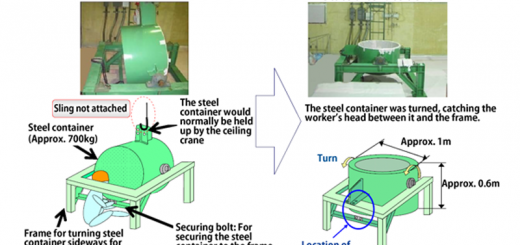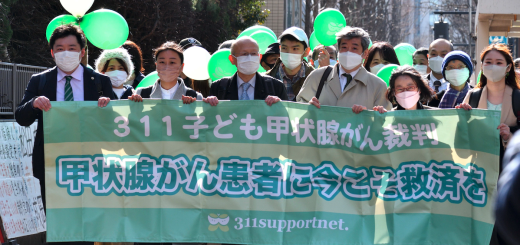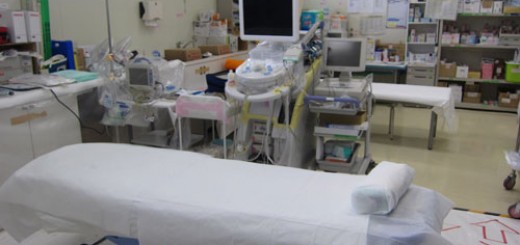Media disapproval of worker compensation certification Unforgivable! Health Ministry must retract incorrect data used for media briefing!
The document says the certification rule for workers suffering from leukemia was set from the standpoint of the worker compensation by taking into account the objective of the compensation system. It also said if a worker with leukemia meets the standard and if it is clear that the worker’s illness was not caused by other reasons than exposure to radiation on the work site, the ministry will certify the worker as having suffered an industrial accident and as being eligible for worker-compensation benefits, after its medical examination team approves his claim.
The Ministry maintained that, when it formulated the standard in 1976, it gave careful attention to the compensation payment in accordance with the spirit of the worker compensation system, so that workers with leukemia could receive a sufficient amount of compensation. It also said the rule was decided upon by taking into account the fact that the maximum permissible level of radiation exposure for ordinary public was 5mSv/year at that time.
The Ministry then stressed that the certification standard does not mean that a worker will develop leukemia if he is exposed to more than 5mSv of radiation annually, and that the certification of a worker’s claim does not indicate that the causal link between the exposure and the damage to the worker’s health was scientifically proved. This comment, however, was unnecessary.
Delayed radiation injuries caused by exposure to radiation are symptoms that emerge after a certain period of time and only a certain percentage of radiation-exposed sufferers develop them. Moreover, certification of the legal causal relationship does not require presentation of scientific evidence. The Supreme Court has previously handed down a ruling to the effect that a high degree of probability is sufficient for certifying a legal causal relationship.
The Ministry’s explanation contradicts the results of the above-mentioned discussions by scientific and medical experts that there is a high degree of probability in the causal relationship between leukemia and working in a nuclear power plant.
The November 23, 2015 issue of the Nihon Keizai Shimbun said that the MHLW had explained the certification standard as though it did not recognize the causal relationship between the worker’s leukemia and the nuclear power plant job. According to the economic daily, the wide gap between the exposure limit stipulated in the Industrial Safety and Health Law and the level mentioned in the worker-compensation certification standard is causing apprehension among nuclear power plant workers.
Some other media also published misleading or incorrect headlines. The November 9, 2015 issue of the Sankei Shimbun, for example, ran the headline, “Leukemia caused by radiation exposure is a false claim,” and the January 12, 2016 issue of the Fukushima Minyu Shimbun ran the headline, “The nuclear worker already had leukemia.”
Taking into consideration the growing number of cases of radiation-related damage to nuclear workers, we, the members of the Radiation-exposed Workers’ Solidarity Network, find it hard to overlook the ministry’s blunder. We have repeatedly criticized the ministry in our negotiations with its officials and on other occasions, such as the May 21 rally during the 2016 spring labor offensive. In this rally, we stressed that, five years after the 2011 Fukushima nuclear disaster, a nuclear plant worker finally won worker compensation certification. We then demanded that the state, TEPCO and other nuclear plant operators take responsibility for the damage to his health.
Also participating in the rally was Mr. Ryusuke Umeda, a Fukuoka-based worker who used to work at the Shimane and the Tsuruga nuclear power plants before he suffered a myocardial infarction (heart attack) and is currently engaged in a court battle to seek worker’s compensation (please see NIT No. 139, 168, 172). His lawyer also took part in the rally and reported on the problems involved in the first trial, which was dismissed by the court, and the challenges involving the battle in the appeal court. They called on the rally participants to support them in their legal battle.



